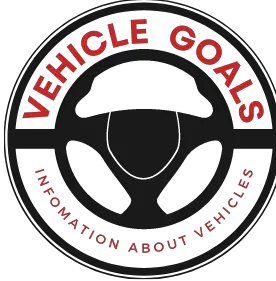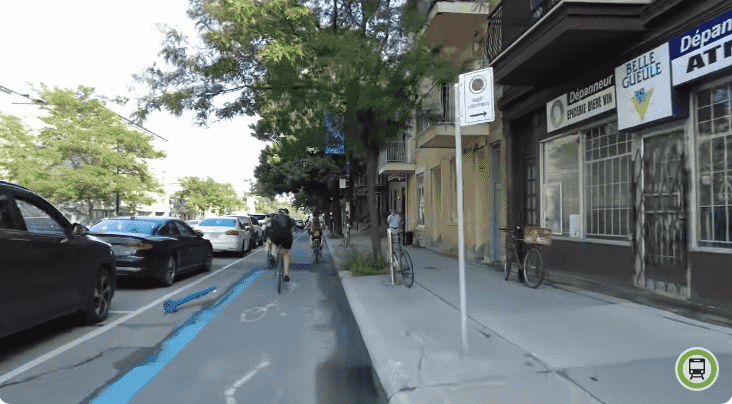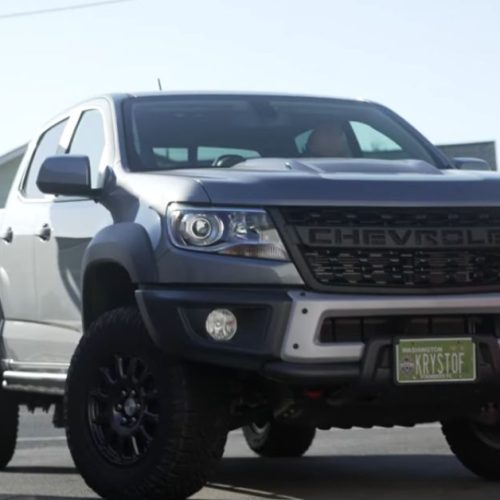You can enter a bike lane when it is safe and necessary. Bike lanes provide a designated space for cyclists to travel safely and efficiently.
As a cyclist, knowing when you can enter a bike lane is vital for both your own safety and the safety of others. Bike lanes are typically marked with solid white lines and symbols of bicycles, indicating that they are exclusive for cyclists.
You can enter a bike lane when you need to turn right at an upcoming intersection or driveway. However, it is important to be cautious and yield to any cyclists already in the lane. Always check for oncoming traffic and use proper hand signals before entering a bike lane. By following these guidelines, you can ensure a smooth and safe experience when entering a bike lane.
Bike Lane Basics: Understanding The Rules
Understanding the rules of bike lanes is crucial to ensure safety and minimize conflicts between cyclists and motorists. It is important to be aware of the regulations when entering a bike lane, in order to make informed decisions and avoid accidents.
Bike lane regulations vary depending on your location and local authorities, but there are some general guidelines to keep in mind. Bike lanes are typically marked by solid white lines and can be found along the right side of the road, separated from vehicular traffic. These lanes provide cyclists with a dedicated space to ride, increasing their safety and visibility.
When entering a bike lane, it is important for motorists to yield to cyclists, allowing them to pass safely. Avoid blocking or parking in bike lanes, as this poses a hazard to cyclists. Also, be mindful of bike lane markings and signs, such as arrows indicating the direction of travel, as they provide important navigation cues.
When Can You Enter A Bike Lane: Essential Considerations
Entering a bike lane is subject to certain considerations to ensure both the safety of the cyclist and the driver. It is crucial to differentiate between legal and illegal entry. When determining whether you can enter a bike lane, it is important to understand the applicable traffic laws.
According to traffic regulations, in most cases, you can only enter a bike lane for a few reasons:
- When making a right turn: Before making a right turn, drivers are allowed to enter the bike lane to yield to cyclists.
- When parking or entering/exiting a driveway: Temporarily entering the bike lane is permissible when parking your vehicle or when entering/exiting a driveway.
- When avoiding an obstruction: If there is an obstruction on your side of the road, you may enter the bike lane to avoid it.
- When permitted by signage: In certain circumstances, local authorities may permit vehicles to enter the bike lane based on specific instructions and signage.
It is important to note that other than these exceptions, entering a bike lane is generally considered illegal. Always prioritize the safety of both cyclists and drivers when on the road.
Safety First: Factors To Keep In Mind
Factors to Keep in Mind:
When entering a bike lane, it is essential to prioritize safety. It is important to assess visibility and potential hazards. Be cautious and monitor approaching bicyclists to avoid any accidents. Maintaining a clear line of sight is crucial before merging into a bike lane. Check for any obstructions or pedestrians that may impede your path. Always use your turn signal and check your blind spots. Be aware that bicyclists may be traveling at different speeds, so give them enough space when entering or exiting the bike lane. By following these precautions, both motorists and bicyclists can share the road in a safe and harmonious manner.
Authorized Entry Points Onto Bike Lanes
Authorized Entry Points onto Bike Lanes
Identifying designated entry areas
In order to enter a bike lane, it is important to understand the authorized entry points. Designated entry areas are typically marked with signage or road markings, indicating where cyclists can safely enter the bike lane. These entry points are strategically chosen to ensure the flow of traffic is unimpeded and to minimize conflicts between cyclists and motorists.
Factors influencing authorized access include the location of the bike lane, the surrounding road infrastructure, and the traffic patterns in the area. Local authorities and transportation departments play a crucial role in determining these entry points based on their knowledge of the area and the needs of cyclists and motorists alike.
By identifying and respecting these designated entry areas, cyclists can effectively and safely utilize bike lanes, enhancing their overall commuting experience. Motorists should also be mindful of these entry points, taking care not to obstruct or endanger cyclists when entering or exiting the bike lane.
Making A Right Turn Across A Bike Lane
When making a right turn across a bike lane, it is important to understand and follow the right-turn process to ensure the safety of both bicyclists and motorists.
Firstly, it is crucial to yield to any bicyclists who are already in the bike lane. Take the time to check for any approaching cyclists before making your turn.
When it is safe to proceed, signal your intention to turn, using your vehicle’s turn signal to communicate with others on the road.
Next, carefully merge into the bike lane, ensuring that there are no bicyclists approaching from behind. Look over your right shoulder and check your mirrors to ensure that the lane is clear.
As you merge, keep an eye out for any bicyclists who may be traveling on the left side of the bike lane, preparing to go straight or make a left turn.
Finally, make your right turn, keeping an appropriate distance from any bicyclists. Be mindful of their presence and give them enough space to safely continue their journey.
Navigating Left Turns In The Presence Of A Bike Lane
If you are a driver and need to make a left turn while there is a bike lane present, it is important to understand the specific procedures for doing so. First and foremost, it is crucial to yield to oncoming bicyclists before turning left. Bicyclists in the bike lane have the right of way, so it is important to wait for a safe gap in oncoming traffic before proceeding. When making your left turn, be sure to signal your intentions well in advance to alert both other drivers and bicyclists of your upcoming maneuvers.
In some cases, there may be a designated left turn lane adjacent to the bike lane. If this is the case, you should merge into the left turn lane as necessary to execute your turn, while still being mindful of any bicyclists present. If there is no designated left turn lane, it is recommended to merge into the bike lane just prior to the intersection, while ensuring there are no bicyclists approaching.
Remember, it is essential to always exercise caution and be aware of your surroundings when navigating left turns in the presence of a bike lane. By following these procedures and yielding to oncoming bicyclists, you can help ensure the safety and smooth flow of traffic for everyone on the road.
Handling Emergencies And Unforeseen Obstacles
When riding in a bike lane, it is important to remain vigilant and prepared for any unforeseen obstacles or emergencies. Reacting appropriately to unexpected situations can help you maintain safety and avoid collisions.
One key aspect of handling emergencies is to stay alert and constantly scan the road ahead. Look out for any hazards or obstacles, such as parked cars, pedestrians, or debris, and adjust your speed and position accordingly to navigate around them safely.
In case of sudden obstacles, such as a car door opening or a pedestrian stepping into the bike lane, it is crucial to have quick reaction times. Be ready to brake or swerve to avoid a collision, but remember to assess the situation and choose the safest course of action.
Additionally, always be prepared for oncoming traffic that may unexpectedly encroach on the bike lane. Stay aware of your surroundings and be prepared to yield or take evasive action if necessary.
Being proactive by signaling your intentions and communicating with other road users can also help prevent accidents. Use hand signals to indicate your turns or lane changes, and make eye contact with drivers or pedestrians whenever possible to ensure they are aware of your presence.
Remember, while bike lanes offer a dedicated space for cyclists, it’s important to remain alert and adaptable to handle any emergencies or unexpected situations that may arise.
Bicycle Lanes At Intersections: Special Guidelines
When entering a bike lane at an intersection, there are some special guidelines to follow. First, it’s important to understand the rules for entering and exiting bike lanes at intersections. When making a right turn, yield to cyclists in the bike lane and merge when it is safe to do so. Maintain a safe distance from cyclists and always use your turn signal to indicate your intention. Remember, cyclists have the right of way in the bike lane, so be patient and wait for an appropriate gap in traffic before merging. Additionally, be mindful of yielding to pedestrians at crosswalks. It is important to exercise caution and respect the space of cyclists when navigating intersections with bike lanes.
Rules For Motorists Sharing Bike Lanes
Motorists are generally not allowed to enter bike lanes, except in certain circumstances. According to the rules, motorists can enter bike lanes when making a turn. They must yield to any bicyclists who are already in the lane and ensure it is clear before proceeding. Motorists should also be cautious when entering and exiting driveways or parking lots that intersect with a bike lane. They should yield to any bicyclists in the lane and watch for their presence before crossing.
When sharing the road with bicyclists, motorists should take proper precautions to ensure everyone’s safety. This includes giving bicyclists enough space when passing, ideally at least three feet of clearance. It is important to check for bicyclists in blind spots before changing lanes or making a turn. Also, be careful with opening car doors to avoid hitting passing bicyclists.
Overall, it is crucial for motorists to be aware of the rules and guidelines when it comes to sharing bike lanes with bicyclists. Respecting their space and following the proper precautions will lead to a safer and more harmonious experience for all road users.
Bike Lanes And Parking: Know The Restrictions
Bike Lanes and Parking: Know the Restrictions
When it comes to bike lanes, it is important to understand the parking regulations that apply. In proximity to bike lanes, there are certain restrictions that should be followed to ensure the safety of cyclists and maintain a smooth flow of traffic.
Parking regulations in proximity to bike lanes:
| No-Stopping Zones |
|---|
| It is crucial to be aware of the designated no-stopping zones around bike lanes. These areas should never be used for parking, as they are specifically marked to keep the bike lane clear and accessible for cyclists. |
Parking in these zones not only obstructs the path for cyclists but can also lead to fines and penalties. It is essential to respect these restrictions and find alternative parking spaces that do not interfere with bike lanes.
By understanding and following the parking regulations in proximity to bike lanes, we can contribute to a safer and more efficient environment for both cyclists and motorists.
Cycling In Bike Lanes: Best Practices For Safety
When it comes to cycling in bike lanes, it is essential to follow best practices to ensure safety for both cyclists and motorists.
Tips for bicyclists when utilizing bike lanes:
- Understand hand signals and how to properly use them to indicate turns and stops.
- Be aware of proper lane usage. Stay to the right-hand side of the bike lane, allowing room for faster cyclists to pass on the left.
- Use caution at intersections. Yield to pedestrians and always check for turning vehicles.
- Stay alert and avoid distractions such as headphones or mobile devices.
- Be mindful of opening car doors. Give parked cars enough space to avoid collisions.
- Keep a safe distance from other cyclists and never ride more than two abreast in the bike lane.
- Obey traffic signals and signs, including stopping at red lights and yielding to oncoming traffic when making a left turn.
In conclusion, following these tips for utilizing bike lanes can greatly enhance the safety and enjoyment of cycling for both experienced and novice cyclists.
Consequences Of Violating Bike Lane Rules
Disregarding the rules of a bike lane can have serious consequences. Violating bike lane rules can result in legal penalties and fines. Depending on the jurisdiction, these penalties can vary, but they often include monetary fines and even possible license points. It is important to be aware of the rules specific to your area in order to avoid these potential consequences.
However, it is not just legal penalties that you need to be concerned about. Disregarding bike lane rules can also have safety implications. Bike lanes are designed to provide a separate space for cyclists, away from vehicular traffic. Ignoring these rules can endanger both cyclists and drivers. Cutting into bike lanes can force cyclists into traffic or cause them to suddenly maneuver to avoid colliding with a vehicle. This can lead to accidents and injuries.
Therefore, it is critical to understand and respect the rules of the bike lane in order to ensure both your own safety and the safety of others on the road.
Frequently Asked Questions Of When Can You Enter A Bike Lane
When Can You Use A Cycle Lane?
You can use a cycle lane when cycling to ensure your safety and avoid potential conflicts with other vehicles on the road. It provides dedicated space for cyclists, allowing them to ride more comfortably and efficiently. Make sure to follow any relevant traffic rules and regulations while using the cycle lane.
When Can You Enter A Bike Lane To Turn California?
You can enter a bike lane to turn in California when it is safe and necessary but always yield to cyclists. Follow traffic laws, signal your intention to turn, and enter the bike lane no more than 200 feet before your turn.
What Are The Bike Light Laws In Austin Texas?
Bike light laws in Austin Texas require cyclists to have a white light on the front and a red reflector on the back when riding at night. Brighter lights and additional reflectors are highly recommended for safety.
Can You Drive In The Bike Lane In Texas?
In Texas, it is illegal to drive in the bike lane.
Can You Enter A Bike Lane To Pass Another Vehicle?
No, you should not enter a bike lane to pass another vehicle. Bike lanes are designated for cyclists only.
Conclusion
Understanding the rules and regulations regarding when you can enter a bike lane is crucial for both cyclists and drivers. By being aware of the specific situations where it is permitted to enter a bike lane, you can ensure the safety of everyone on the road.
Always remember to stay alert, use your indicators, and yield to cyclists when necessary. Following these guidelines will contribute to a safer and more harmonious coexistence between cyclists and motorists.






